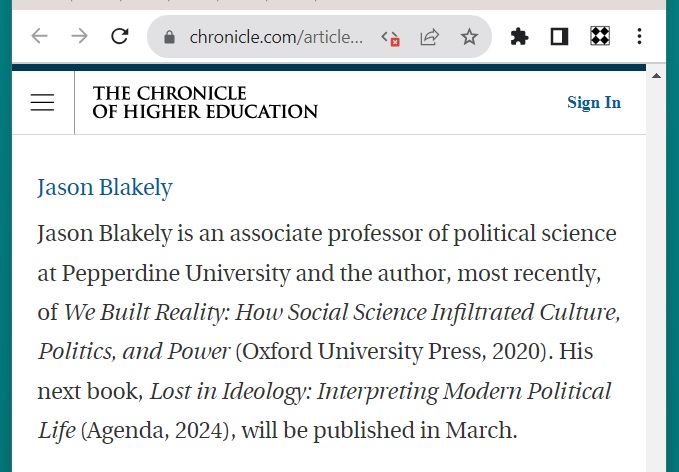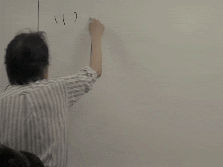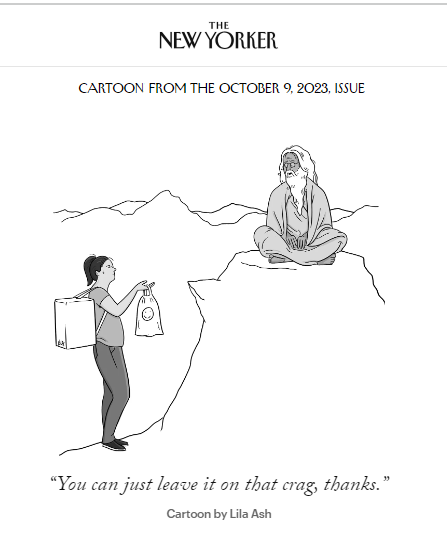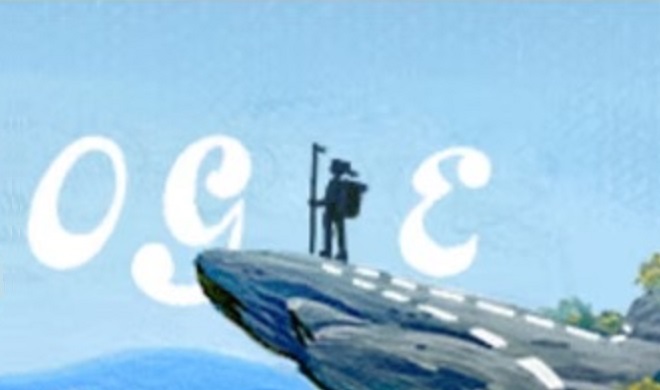Also in 2020 —
Wednesday, October 4, 2023
“We Built Reality”
Clearwater Revival
"You can ponder perpetual motion
Fix your mind on a crystal day
Always time for a good conversation
There's an ear for what you say"
— "Up Around the Bend" lyrics
Tuesday, October 3, 2023
Tuesday… Belgium.
The inscape in the previous post suggests a review of
work by the Belgian mathematician Koen Thas on what
might be called the "quantum tesseract theorem."
Babes in Tweeland
The New Yorker yesterday on a film director —
"Lest viewers become even briefly comfortable with
the enchantments of his staging and of his actors’
performances, Anderson jolts them alert with
ever more audacious contrivances."
"As you can see, we've had our eye on you
for some time now, Mr. Anderson."
Monday, October 2, 2023
Design Cube at Replit
The Replit code development environment featured
in today's previous post has hosted, for some time now,
an embodiment of the design cube from earlier posts —
Noonday Art:
Putting the L in OGLE
Putting the L in OGLE
The Space Institute: Curiouser and Curiouser
Sunday, October 1, 2023
The Usual Suspects: Schmeikal
From a search in this journal for "Schmeikal" —
|
Schmeikal Bio https://keplerspaceinstitute.com/project/volume-9-number-1/ [Spring 2020] [Page 7] — Introduction by the Editors We have been blessed throughout the publication history of the Journal of Space Philosophy, beginning in 2012, with the volunteer service of 42 professionals in the Space community to act as reviewers and consultants to our authors. They have been listed in the final article of each published issue. We are proud to announce with this letter the addition of our latest Senior Consultant, Dr. Bernd Anton Schmeikal. [Image of Dr. Schmeikal] This Letter to the Editor is about Dr. Schmeikal. Bernd Anton Schmeikal, born May 15, 1946, is a retired freelancer in research and development, qualified in Sociology with a treatise about cultural time reversal. He is a real maverick, still believing that social life can be based on openness and honesty. As a PhD philosopher from Vienna, with a typical mathematical physics background, he entered the Trace Analysis Group of the UA1 Experiment at CERN, under the leadership of Walter Thirring, in 1965. This was in the foundation phase of the Institute for High Energy Physics (HEPhy) at the Austrian Academy of Science. He has always been busy solving fundamental problems concerning the unity of matter and space-time, the origin of the HEPhy standard model, and the phenomenology of relativistic quantum mechanics. In the Sociology Department of the Institute for Advanced Studies (IHS Vienna), he helped James Samuel Coleman to conceive his mathematics of collective action as a cybernetic system, and he gave the process of internalization of 7 ………………. End of page 7 [Page 8] — Journal of Space Philosophy 9, No. 1 (Spring 2020) collective values an exact shape. He implemented many transdisciplinary research projects for governmental and non-governmental organizations, universities, and non-university institutions, and several times he introduced new views and methods. He founded an international work stream that, for the first time, worked under the name of the Biofield Laboratory (BILAB). Although close to fringe science and electromedicine, the work of BILAB had a considerable similarity to the Biological Computer Laboratory run earlier by Heinz von Foerster. Lately, he has applied Foerster’s idea of a universal relevance of hyperbolic distributions (Zipf’s law) in social science to the labor market. This signifies a last contribution to the research program of the Wiener Institute for Social Science Documentation and Methodology (WISDOM) under the sponsorship of the Austrian Federal Presidential Candidate Rudolf Hundstorfer. Dr. Schmeikal is convinced that a unity of science and culture can be achieved, but that this demands more than one Einstein. Consequently, he sought cooperation with Louis Kauffman and Joel Isaacson. Dr. Bernd Schmeikal’s review and evaluation of Joel Isaacson and Louis Kauffman’s Recursive Distinctioning (aka “Nature’s Cosmic Intelligence”) research and papers, published in the first issue of the JSP, Fall 2012, again in the Special JSP Issue on Recursive Distinctioning, Spring 2016, and again in the Fall 2017 issue, are very valuable contributions to this forefront science investigation of Nature’s Cosmic Intelligence. Dr. Schmeikal, University of Vienna Professor in mathematics, linguistics, and physics is one of the world’s distinguished scholars for this special field of universe autonomous intelligence. He begins his abstract with the statement: “This paper investigates a universal creative system,” and ends it with “That is to say, our universe may be a representation of Isaacson’s system, and entertainingly, with his US Patent specification 4,286,330, 1981, it seems he has patented creation.” Reports on the four annual KSI-sponsored Conferences for Recursive Distinctioning, to date, can be found in JSP publications. Dr. Schmeikal’s latest book publication is Nuclear Time Travel and the Alien Mind, published by Nova Science Publishers, New York. In 119 pages, Dr. Schmeikal tells the historic story of unidentified objects, and the knowns and unknowns of advanced space-time warping time-travel technology. He includes a September 24, 1947 top secret letter of President Harry Truman to Secretary of Defense Forrestal, authorizing research into these matters, but confining ultimate disposition to be solely under the Office of the President. Dr. Schmeikal’s discussions of the impacts of the extraterrestrial mind on past Earth events give a research variable as we attempt to understand and predict future outcomes of attempts at improving humanity’s prospects (see Yehezkel Dror, JSP, Summer 2015 and Kepler Space Institute, book publication, 2019) as we humans proceed with exploring, developing and building human Space settlements. Bob Krone and Gordon Arthur Founding and Current Editors, Journal of Space Philosophy April 15, 2020 8 …………………………… [End of page 8] |
From the Vulgar Latin Muse — Pint, Pinter, Pinterest
"Pint comes from the Old French word pinte and perhaps ultimately
from Vulgar Latin pincta meaning 'painted,' for marks painted on
the side of a container to show capacity.*
* "Pint," Merriam-Webster.com. 2013. Retrieved 31 May 2013."
"Ride a painted pony . . ." — Play It as It Lays song
"I love you Mony Mony . . . ." — Another song
Hassabis
Related religious remarks from this journal on Augustine's Day 2023:
|
"We stopped at the Trocadero and there was hardly anyone there. We had Lanson 1926. 'Drink up, sweet. You gotta go some. How I love music. Frère Jacques, Cuernavaca, ach du lieber August. All languages. A walking Berlitz. Berlitz sounds like you with that champagne, my sweet, or how you're gonna sound.'" — John O'Hara, Hope of Heaven, Chapter 11, 1938 "And they were all filled with the Holy Ghost, and began to speak with other tongues, as the Spirit gave them utterance." "Lps. The keys to. Given! A way a lone a last a loved a long the
PARIS, — James Joyce, conclusion of Finnegans Wake |


























